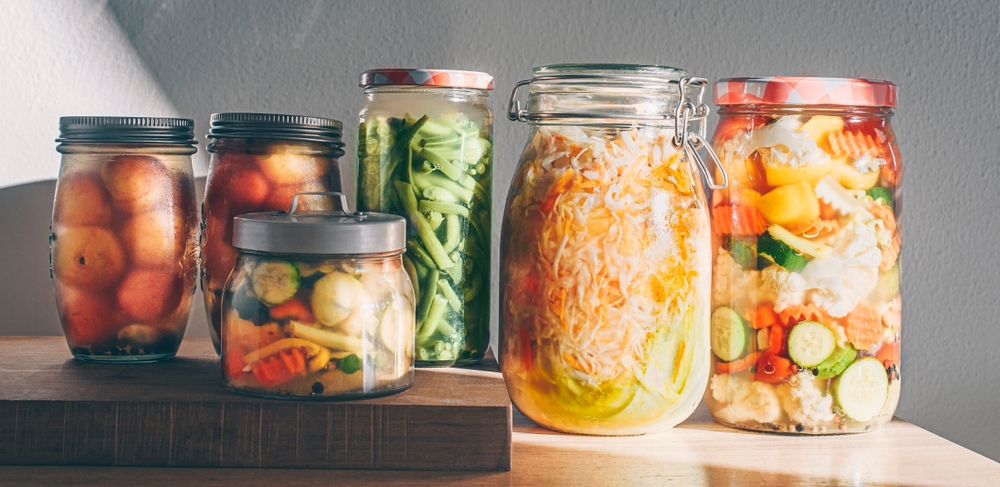Sour Power: Exploring the Zingy World of Pickling
Tangy, crisp, and bursting with flavor, pickled foods are making a comeback in kitchens worldwide. From classic dill pickles to adventurous kimchi creations, the art of pickling is experiencing a renaissance. Join us as we dive into the vibrant world of pickling, uncovering its rich history, health benefits, and endless culinary possibilities.

Today, pickling has evolved from a mere preservation method to a culinary art form. Chefs and home cooks alike are experimenting with unique flavor combinations and unconventional ingredients, pushing the boundaries of what can be pickled. From watermelon rinds to mustard seeds, the pickling possibilities are truly endless.
The Science Behind the Sour
At its core, pickling is a straightforward process that relies on the power of fermentation. When foods are submerged in an acidic solution, beneficial bacteria begin to thrive, converting sugars into lactic acid. This process not only preserves the food but also creates the characteristic tangy flavor we associate with pickles.
The science of pickling goes beyond just preservation. The fermentation process can actually increase the nutritional value of foods, boosting vitamin and mineral content. Additionally, the probiotics produced during fermentation can contribute to improved gut health, making pickled foods a delicious and nutritious addition to any diet.
Global Pickle Parade: A Tour of Tangy Traditions
Pickling traditions vary widely across cultures, resulting in a diverse array of flavors and techniques. In Korea, kimchi reigns supreme, with its fiery blend of fermented vegetables and spices. German sauerkraut offers a milder, tangy crunch, while Indian achaar delivers a bold, spicy kick to any meal.
Exploring these global pickling traditions can be a thrilling culinary adventure. From Japanese tsukemono to Mexican curtido, each culture’s unique approach to pickling reflects its history, climate, and flavor preferences. By incorporating these diverse pickle styles into our cooking, we can expand our palates and gain a deeper appreciation for global cuisines.
DIY Pickling: Crafting Your Own Crunchy Creations
One of the most exciting aspects of the pickling renaissance is the rise of home pickling. With just a few basic ingredients and some simple equipment, anyone can create delicious pickled treats in their own kitchen. This DIY approach allows for endless experimentation and personalization, from adjusting spice levels to trying out unconventional flavor combinations.
To get started with home pickling, all you need is fresh produce, vinegar or brine, spices, and clean jars. Whether you’re making quick refrigerator pickles or embarking on a long-term fermentation project, the process is both rewarding and surprisingly simple. Plus, homemade pickles make for unique and thoughtful gifts, perfect for sharing your culinary creations with friends and family.
Beyond the Jar: Creative Uses for Pickled Foods
While pickles are delicious on their own, their versatility in cooking is often overlooked. Pickled foods can add depth, complexity, and a bright punch of flavor to a wide range of dishes. Try incorporating pickled onions into your next taco night, or add a dollop of kimchi to your morning eggs for a zesty wake-up call.
Pickles can also play a starring role in cocktails, adding a savory twist to classic drinks. A pickle-infused martini or a Bloody Mary garnished with pickled vegetables can elevate your cocktail game to new heights. Don’t be afraid to think outside the jar and experiment with pickles in unexpected ways – you might just discover your new favorite flavor combination.
Pickle Power: Tips and Facts
• Quick pickles, also known as refrigerator pickles, can be ready to eat in as little as 24 hours.
• Vinegar-based pickles are high in antioxidants, which can help protect against cell damage.
• The world’s largest pickle festival is held annually in St. Charles, Illinois.
• Pickles were one of Cleopatra’s beauty secrets, believed to help maintain her good looks.
• Adding grape leaves to your pickle jars can help keep them crisp due to their tannin content.
• The phrase “in a pickle” originated in Shakespeare’s “The Tempest,” referring to being in a difficult situation.
As we’ve explored the world of pickling, it’s clear that this ancient preservation technique is far more than just a way to keep cucumbers fresh. From its rich history and scientific foundations to its global variations and creative culinary applications, pickling offers a world of flavor waiting to be discovered. Whether you’re a seasoned pickler or a curious newcomer, there’s never been a better time to embrace the sour power of pickled foods. So grab a jar, experiment with flavors, and join the pickling revolution – your taste buds will thank you.





